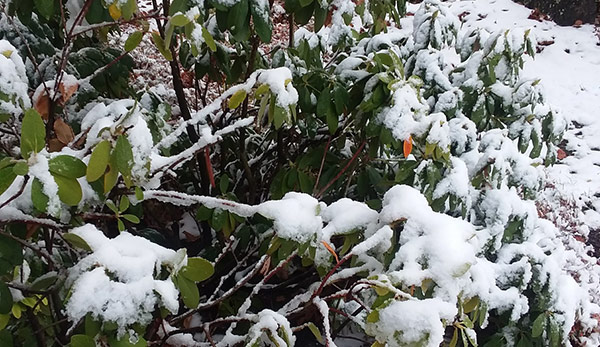Virginia Green Grow Beyond Blog
Respect the Lawn
Our Blogs
Lawn of the Month Winners - 2024 January
We are thrilled to announce the January Lawn of the Month winners at the start of a wonderful new year! It’s thrilling to see how Virginia Green lawns are thriving in these cold months. Remember, each month is a new chance to win $75 towards a future application.
Message from Gil: Ready for Great Service in 2024
Ready for Great Service in 2024
Happy New Year from Virginia Green! We're eager to continue offering exceptional lawn and landscape services in 2024. Weather permitting, we'll be out servicing your lawn soon. Now's the perfect time to schedule soil testing, lime applications, or even add tree and shrub care to your services.
Protecting Your Garden from Cold Weather
Cold weather can be a silent enemy to your garden, often causing unseen damage to plants, trees, and shrubs. Many gardeners overlook this issue, only to find signs of harm in the spring. Wilting leaves and a sparse canopy might surprise you in an otherwise lush season, and you may notice defoliation weeks after a brief cold spell. The root cause? Water management within the plant.
Lawn of the Month Winners - 2023 November/December
Happy New Year from Virginia Green! We are excited to announce our November/December Lawn of the Month winners! If you weren’t chosen, next month is another opportunity to show off your lawn this winter. Remember, each month is another chance to win $75 toward a future application.
Snow on Your Trees and Shrubs
Should you worry about heavy snow on trees and shrubs?
After a heavy snowfall, have you ever thought about removing heavy snow from the branches of your trees and shrubs? There are two thoughts about this question. We will discuss both of them here.

What Are These Small Green Worms In My Trees?
What Are These Small Green Worms In My Trees?
The small green worms you find in your trees are called cankerworms.
Lawn Programs
Premium Lawn Care Service
Our most popular lawn care service is Premium Lawn Care. It includes seven essential treatments per year to keep your lawn green, vibrant, and weed-free.
7 Applications per Year
- Pre-emergent crabgrass control
- Broadleaf weed control
- Nutsedge control
- Starter lawn fertilizer for seedling germination and development
- Liquid and granular lawn fertilizer applications
Estate Lawn Care Service
For homeowners seeking exceptional lawn care services, our Estate Lawn Care Service offers the ultimate in care and customization. This comprehensive program includes advanced treatments.
11 Applications per Year
- Pre-emergent crabgrass control
- Broadleaf weed control
- 2 applications of nutsedge control
- Starter lawn fertilizer for seedling germination and development
- Liquid and granular lawn fertilizer applications
- 4 applications of lawn disease prevention fungicides
- Lime Application
- Grub Control
- Annual soil samplings and results


